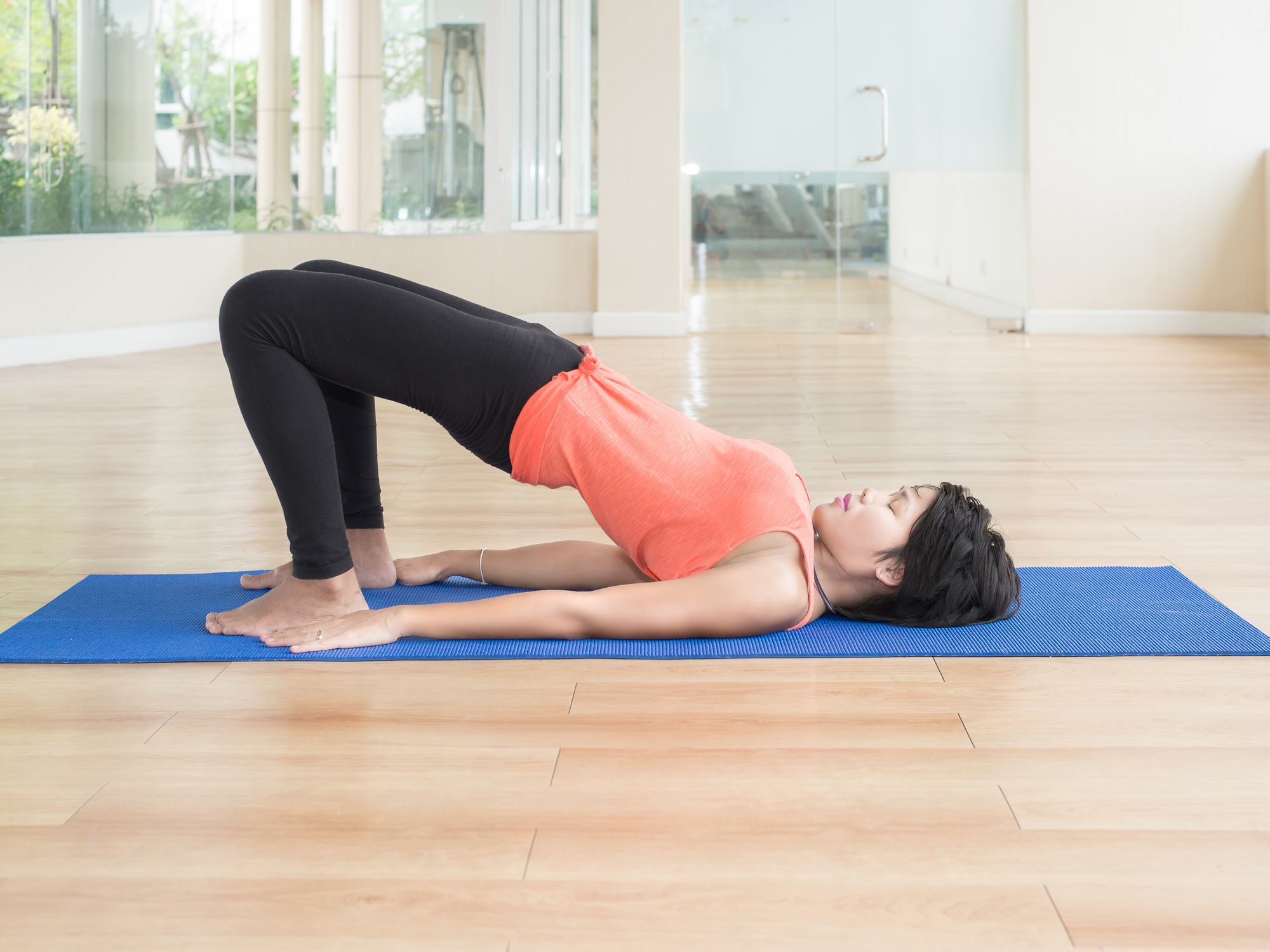Get Easy Health Digest™ in your inbox and don’t miss a thing when you subscribe today. Plus, get the free bonus report, Mother Nature’s Tips, Tricks and Remedies for Cholesterol, Blood Pressure & Blood Sugar as my way of saying welcome to the community!
Stretch your spine to decrease back pain

Tightness across the lower back, mid back and chest is common contributor to back pain.
Often times, back pain occurs from muscles that become too tight and restrict range of motion while also compressing or irritating nerves. Stretching the muscles and opening up the space between the spinal vertebrae is a great way to feel better.
In today’s video, Yoga teacher Wendy Krauss Talis will lead us in an exploration of the Bridge Pose. Because it can be difficult for some, she will demonstrate it without and with the use of posture-balance props.
Beginning posture
Begin sitting on the floor, knees bent, hold your knees for balance and engage your core as you gently allow yourself to lie down.
On you back, pull your heels in closer to your butt. Allow your arms to relax down by your sides, palms down, fingers as close to your heels as possible.
Pelvic tilt and rock
You want now to rock your pelvis gently. You will slowly tilt your pelvis upward and then rock the pelvis back. This loosens the area by creating space in the vertebrae. Do as many time as you like to warm up the area.
Bridge pose – unassisted
Once warmed up you will tilt your pelvis up and then continue the motion to raise your low back up off the floor.
Shift your weight into the shoulders and bring your heels in closer. In the video, Wendy shows several variations for posture support. Please have a look.
Hold the Bridge Pose for a few breaths.
When you are ready to return back you can lower down from shoulders to hips.
Bridge pose – with block assistance
In this example of the Bridge Pose, Wendy uses a yoga block for support. Note that you can use another support item, like a thick book or dense pillow, etc. Also, note that with the block there are three different vertical sizes, depending on which side is on the floor.
Begin the bridge in the same way by tilting the pelvis and then arching the spine.
You will then insert the block under your tailbone for support. This will hold up the lower back to help you sustain the posture, if you do not have the strength or stamina to do so by yourself.
The use of the support block changes the Bridge Pose from one that strengthens to one that opens the tight areas of the body.
Hold for up to five minutes and then return slowly to the starting position
Closing posture
While still on your back, bring in both knees and hug them, keeping shoulders down, and relax.
You can also rock your knees from side to side or come into a double knee twist to loosen up and relax the lower back even more.












